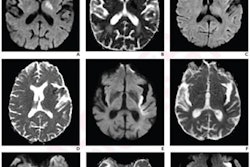
A pilot program conducted in New York City has shown that a mobile interventional stroke unit improves patient outcomes at 90 days after injury, according to a study published August 5 in Stroke.
The unit was developed by stroke experts at Mount Sinai Health System and was staffed by a neurointerventionalist, a fellow-in-training or a physician assistant, and a radiologic technologist. It traveled to patients experiencing ischemic stroke to perform emergency endovascular thrombectomies rather than transferring them to a higher-level stroke center.
A team led by senior author Dr. Johanna Fifi assessed results from 226 stroke patients who underwent endovascular thrombectomy between January 2017 and February 2020. Of these, 106 were treated by the mobile interventional stroke team (MIST), and 120 were treated at the hospital. The group compared 90-day functional outcomes between the two patient groups, tracking results by treatment within six hours of stroke onset and six hours after.
The researchers found the following:
- Patients treated within six hours of stroke onset with the mobile unit had a higher good outcome rate at 90 days postevent compared to those in the transferred group (54% versus 28%).
- Functional outcomes in patients treated by the mobile unit within six hours of stroke onset were better than transferred patients.
- Patients treated six hours or more after stroke onset had similar outcomes: 35% of mobile unit treated patients had good 90-day outcomes, while 41% of transferred patients had good three-month outcomes.
"Ischemic strokes often progress rapidly and can cause severe damage because brain tissue dies quickly without oxygen, resulting in serious long-term disabilities or death," Fifi said in a statement released by the American Heart Association, publisher of the journal. "Assessing and treating stroke patients in the early window means that a greater number of fast-progressing strokes are identified and treated."



















